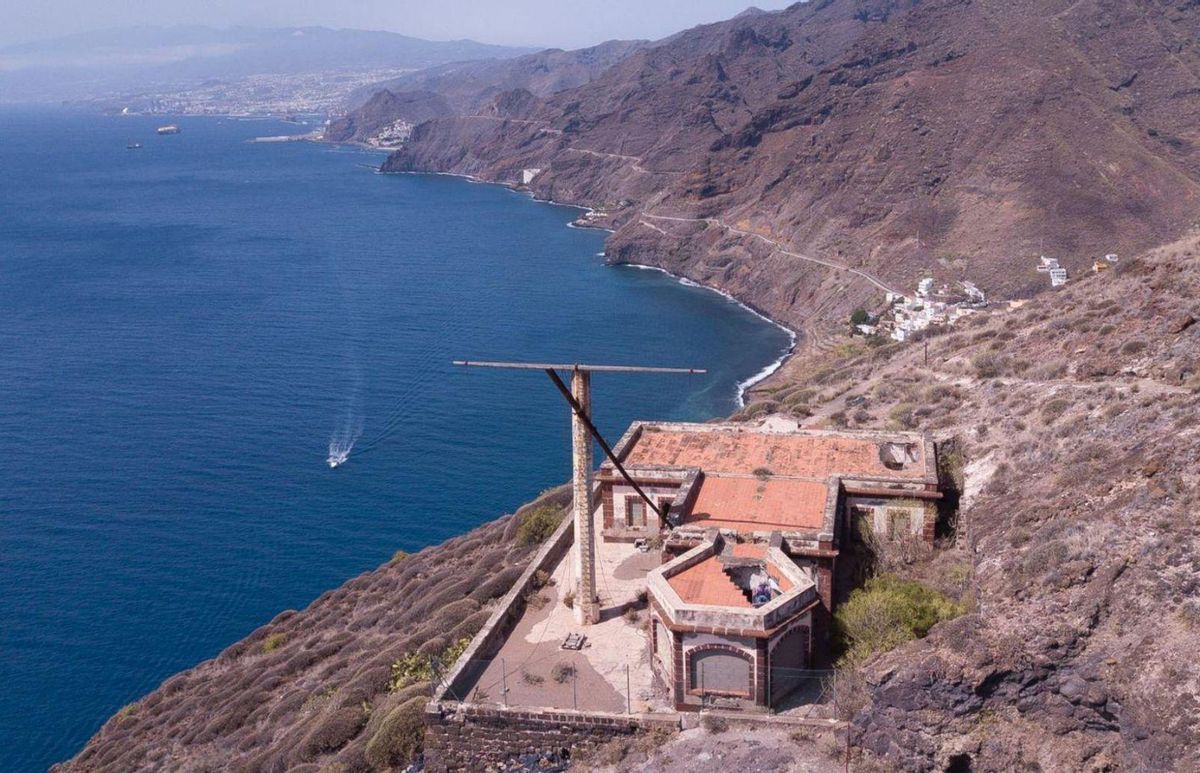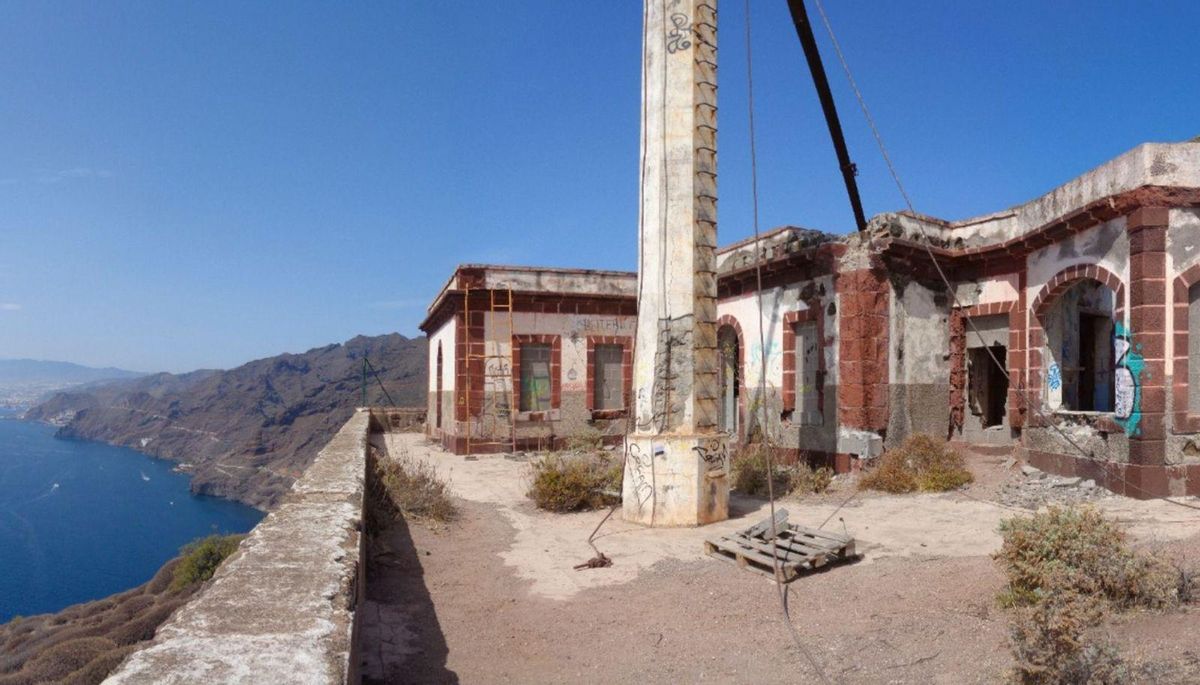Before traffic lights proliferated on streets and avenues, there existed in the Canary Islands a unique building erected for a very different purpose: to serve as a reference point for navigators and as “the last point in Spain before continuing the journey” to America.
Located in a strategic position facing the Atlantic, this building, now in ruins, was once considered the Silicon Valley of its time due to its significance in the development of communications.
It was also one of the first traffic lights installed across Spain.
The project began in 1884 when the Government decided to deploy a network of electro-semophoric stations along the coast, with the dual mission of warning the population of potential attacks and facilitating the entry of ships into port.
This technological advancement found one of its most notable milestones in Tenerife: the Igueste de San Andrés Maritime Signalling Station, commonly known as the La Atalaya Light, which was the first of its kind in the Canaries.
In Tenerife
In 1871, the Spanish government decided to create a network of electro-semophoric stations. The Punta de Anaga in Tenerife was identified by a commission from the Ministries of Navy, Governance, and Overseas as a prime location.
Just a year later, on 30 September 1884, the Igueste de San Andrés Maritime Signalling Station was inaugurated here, one of the first twenty constructed by the Ministry of Development in Spain.
Situated on the Atalaya de Anaga at an altitude of 222 metres above the cliff, the structure covered 1,194 m², of which 247 m² corresponded to the main building, overseeing the north of La Jurada beach, right where a newly laid submarine cable connected Tenerife to the world.
Before Radio
From this point, vessels in transit could exchange international messages via telegraph, long before radio reached the seas.

Santa Cruz viewed from the Semáforo de Igueste de San Andrés. | | E.D. / José Manuel Ledesma Alonso
As local scholar Javier de Vega, grandson of the local master, recounted to this publication some years ago, the Semáforo de Igueste “was in its day the current Silicon Valley, given its relevance in the communications world: it brought the telegraph to Anaga and compelled ships heading to America to approach for communication with their owners, before continuing on their routes; it was the last point in Spain before continuing the journey.”
The spokesperson for the Semáforo de La Atalaya collective noted then that “perhaps today we are not aware of how significant it was for shipowners to know that everything was alright before moving on to America.”
The Building
The semaphore rose in a rectangular structure with two two-bedroom flats, a kitchen and toilet, and an adjoining module for the service worker.
Separate from these facilities, a hexagonal observatory provided 360° views to monitor the arrival of ships as well as any emerging threats.
Its exterior featured two cisterns that collected rainwater and a bread oven, allowing the two lookouts and the semaphore keeper to live autonomously with their families until 1970.
With the establishment of the International Code of Signals in 1852, the semaphore incorporated a 16-metre mast equipped with spars, flags, and halyards to raise signals.

The Semáforo de Igueste de San Andrés / Humberto Gonar
In 1886, upon the inauguration of the Navy Command at the Southern Dock of Santa Cruz, the Igueste station maintained visual communication with this new post, reinforcing its importance in the vigilance chain.
Modernisation
The arrival of the French submarine telegraph in 1894 led to its modernisation: this line has provided a direct link between the Canaries and America since then, regularly used by the ships stopping in Tenerife.
Meanwhile, the British company Bruce, Hamilton & Co had installed its own semaphore in 1886 to anticipate the arrival of its cargo ships, which was operational only until the official electric semaphore of Igueste opened in 1893, when the company handed over its small jetty and the path of 2,054 metres along the hillside to the Ministry of Navy.
However, advancements in maritime communications and the consolidation of radio and radar networks rendered the flag system obsolete. On 2 July 1970, the Ministry of Navy transferred the building to the Ministry of Finance, incorporating it into state heritage. From then on, the semaphore remained uninhabited and suffered vandalism: windows and doors were torn off, partitions demolished, and its cisterns and oven destroyed.
Deterioration and Interpretation Centre
In response to such deterioration, community associations succeeded in having the Santa Cruz City Council include the station in the Historical Heritage Catalogue and halt its public auction in 2021 for 22,260 euros.
The effort culminated in December 2022 with the transfer for 15 years (extendable for another 15) of the entire complex to the General Directorate of Cultural Heritage of the Government of the Canary Islands for rehabilitation and redefinition of its use.
In 2024, the capital’s City Council inaugurated the new Interpretation Centre of the Semáforo de Igueste de San Andrés, an initiative developed in collaboration with Intervento and the Semáforo de La Atalaya collective.
The Interpretation Centre of the Semáforo de Igueste de San Andrés now aims to serve as a meeting point for enthusiasts of history, heritage, and local culture, offering a dynamic and educational space to learn about the maritime history of Santa Cruz de Tenerife.
















